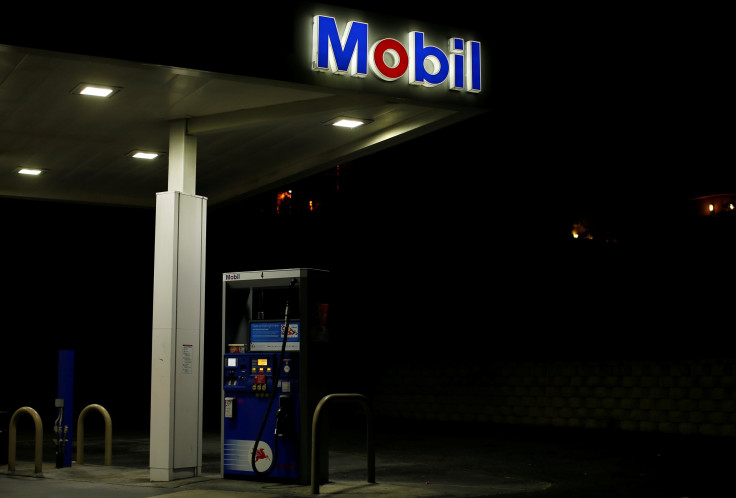Will Oil Prices Ever Go Back Up? ExxonMobil, Chevron And Others Report Dismal Quarterly Earnings Amid Industry Challenges

With crude prices stuck around $50 per barrel and exploration and capital budgets shrinking, America’s oil giants signaled further worries for the industry’s future and growth potential last week.
ExxonMobil Corp (XOM), the world’s largest publicly traded oil and gas company, reported third-quarter earnings on Friday far below those of the previous year, and announced it would likely have to cut nearly a fifth of its oil reserves, or 4.6 billion barrels, if low prices continued through the end of 2016.
The third largest, Chevron Corp. (CVX), revealed on Friday a 35 percent fall in year-over-year earnings, to $1.3 billion from $2 billion, while ConocoPhillips (COP) reported on Thursday a third-quarter adjusted net loss 60 percent larger than that of its 2015 third quarter. Valero Energy (VLO), reporting its third quarter results on Tuesday, revealed a nearly 60 percent fall in year-over-year quarterly adjusted net income, to $571 million this year from $1.4 billion in 2015.
Whether next year will entail similar revenue declines depends on the companies’ production, according to Tim Hynes, head of research at the corporate analysis provider Debtwire.
“We expect revenues to stay flat,” Hynes told the International Business Times in a phone interview, adding that crude prices should follow the same trend through the third quarter of 2017, hitting up to $52 per barrel.
Taken with this year’s World Energy Congress projections that global energy demand will peak in less than 14 years, it’s no surprise that the industry is expected to cut $1 trillion in exploration and development spending by 2020.
The Organization of Petroleum Exporting Countries’ (OPEC) and Russia’s threats to jack up prices by cutting production have hardly had the desired impact, as many officials have been as quick to back off of output cap promises as they have been to make them.
OPEC announced in late September its intentions to cut production to between 32.5 million and 33 million barrels per day at a Nov. 30 meeting from a current output of 33.26 million barrels per day. On Saturday, members of the group met with non-OPEC states, including Mexico, Brazil, Oman and Russia, but made no conclusive statement as to whether they would join in imposing a cap after Nov. 30, Reuters reported.
Either way, many are skeptical that these cuts would have any impact if OPEC and Russia followed through.
“There’s just too much oil,” wrote Forbes correspondent Christopher Helman, who covers the energy industry. He added that OPEC members “might enjoy the cheap sugar high of jawboning prices up with talk about cuts, but the problem is that there is so much oil sloshing around world markets right now, that even slightly higher prices will trigger even more supply, which will only knock the supports out of the market.”
Sean Heinroth, an oil and gas principal at the consulting firm A.T. Kearney, expressed a similar outlook. Though he predicts that prices will rise slightly in the long term, he doesn't expect OPEC to be the reason for the hike.
"It would be to [members'] detriment if the non-OPEC members would make up for the shortage," Heinroth said, adding that a teaming-up between the cartel and Russia might allow for more control of the market, he doesn't think the partnership is a likely one.
Heinroth added that he would expect supplies from the U.S. to "shoot through the roof" if that happens, in a move that would replenish global supply and depress prices once more.
Hynes, on the other hand, would disagree. While he believes OPEC states have acknowledged that the market oversupply is bound to last, he cited recent but short-lived spikes in the price of crude as evidence that the cartel could still have an impact.
“I think that, psychologically, if they reach an agreement [at the Nov. 30 meeting], you could see prices go up,” he said.
Another potential drag on the industry is the 2015 Paris climate agreement, which the U.S. and China, the world’s respective first and second largest consumers of oil, ratified in early September. Hynes expected few industry ripples related to the agreement for the next five to 10 years. But, while the impact on demand will depend on the speed at which individual governments impose policy constraints to limit carbon emissions in the coming years, the agreement is sure to make a dent in supply early on, according to Michelle Patron, a former energy and climate advisor to President Barack Obama.
“Regulations that tighten controls on methane, a gas produced alongside oil and flared into the environment, may increase production costs,” Patron wrote in a Reuters column. “Meanwhile, growing pressure by environmentalists for companies to strand or abandon risky environmental investments, such as oil sands, deep water and Arctic drilling, can limit supply options and force companies back to onshore assets in politically unstable countries.”
Heinroth, however, expected such agreements to phase out more environmentally damaging commodities, like Canadian oil sands, while making room for exploitation of fuels with smaller carbon footprints, like natural gas. Still, he hardly expected the changes to play out anytime soon.
"It's very hard to trade diesel-fueled cars for Teslas," Heinroth said. "I don't expect it to have a substantial effect in the short term."
After seeing a slight rise above $51.50 from $51.00 on the day of ConocoPhillips’ earnings release, Brent crude, a global benchmark, slid down to $49.17 by Monday. West Texas Intermediate (WTI), another key indicator, followed a similar path, climbing just above $50 on Oct. 27 before tumbling to around $47.50, a one-month low, on Oct. 31.
© Copyright IBTimes 2025. All rights reserved.






















